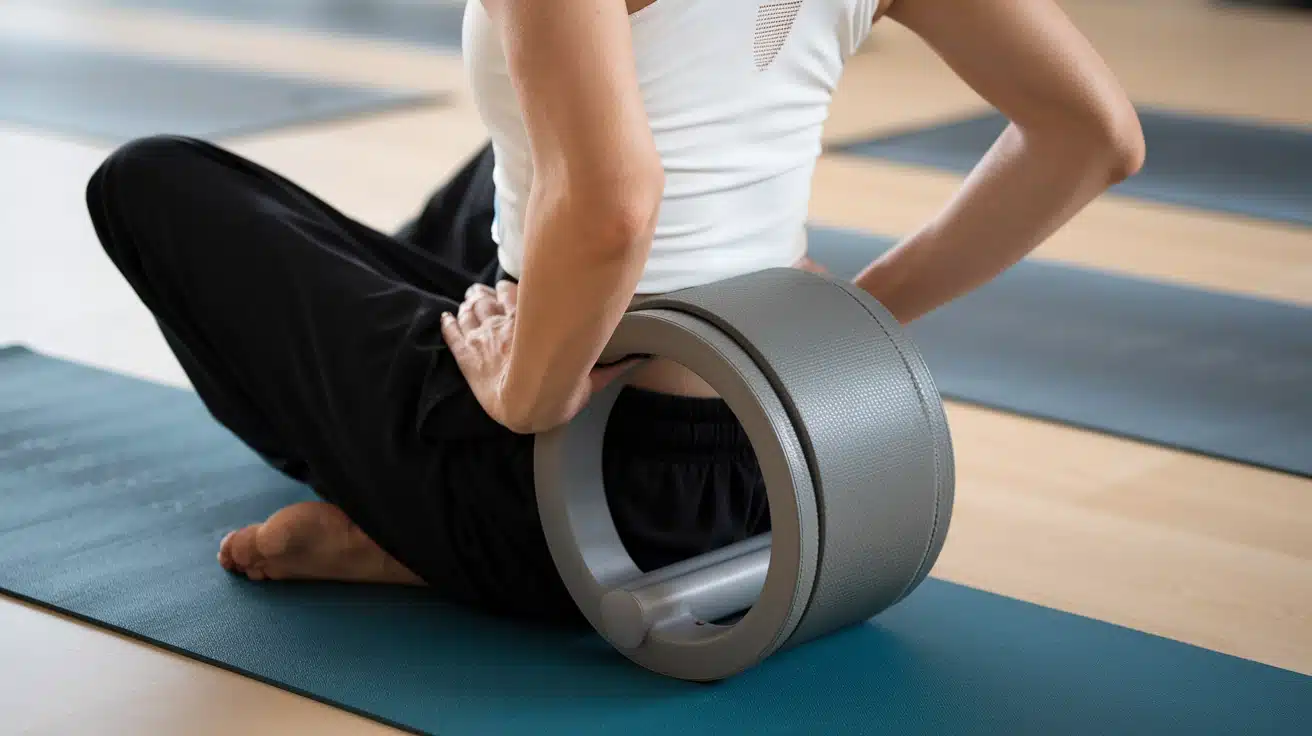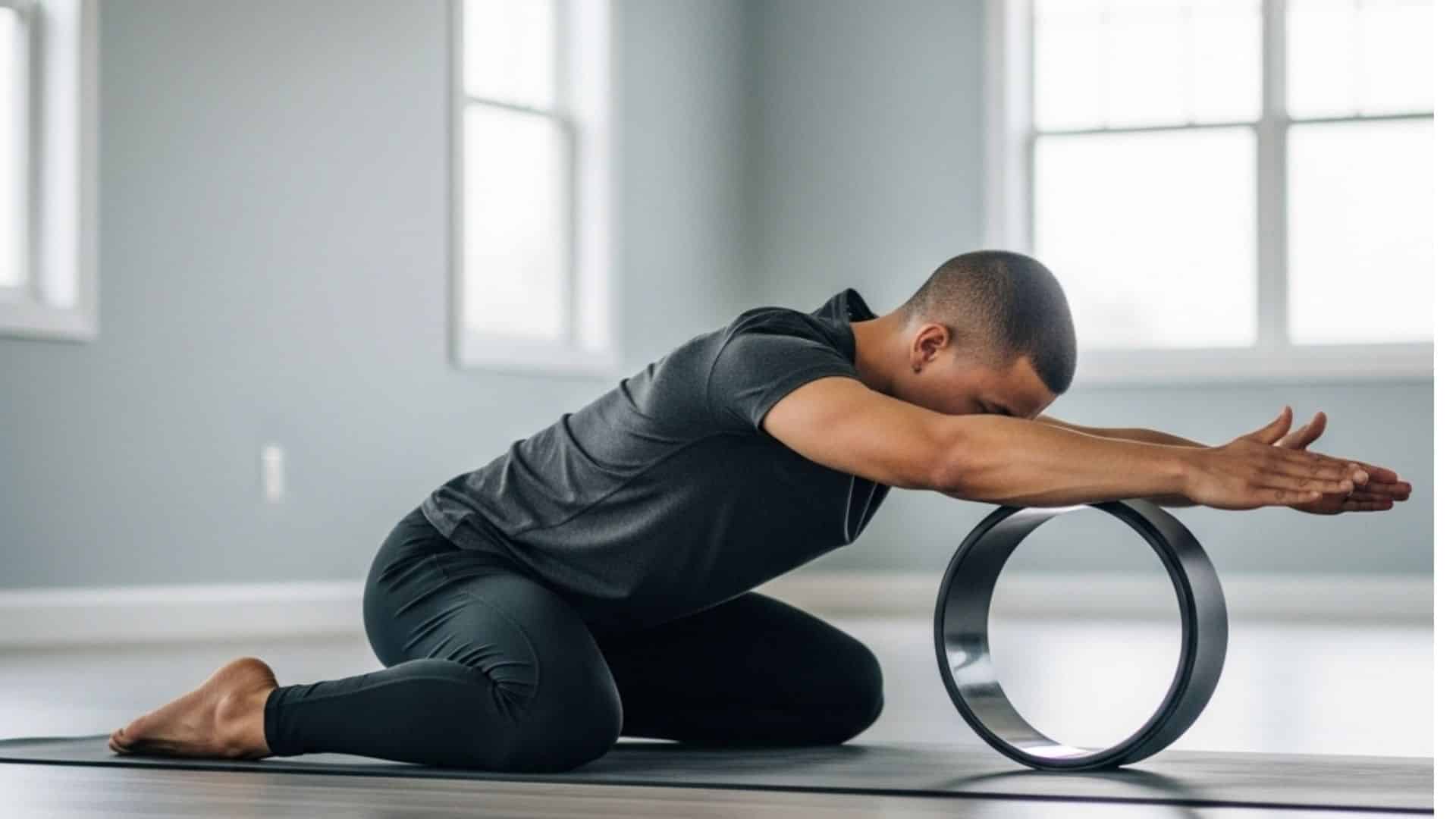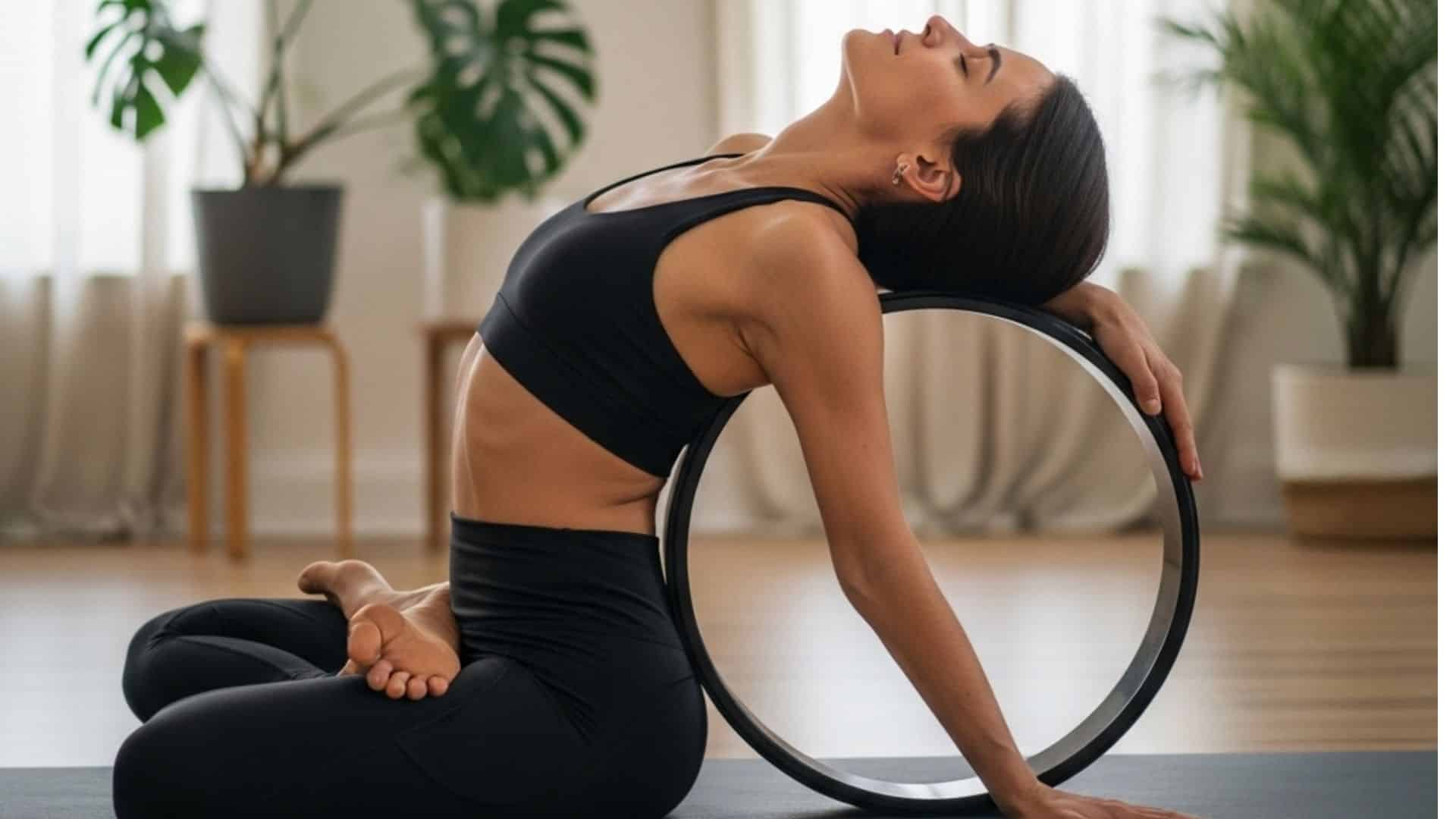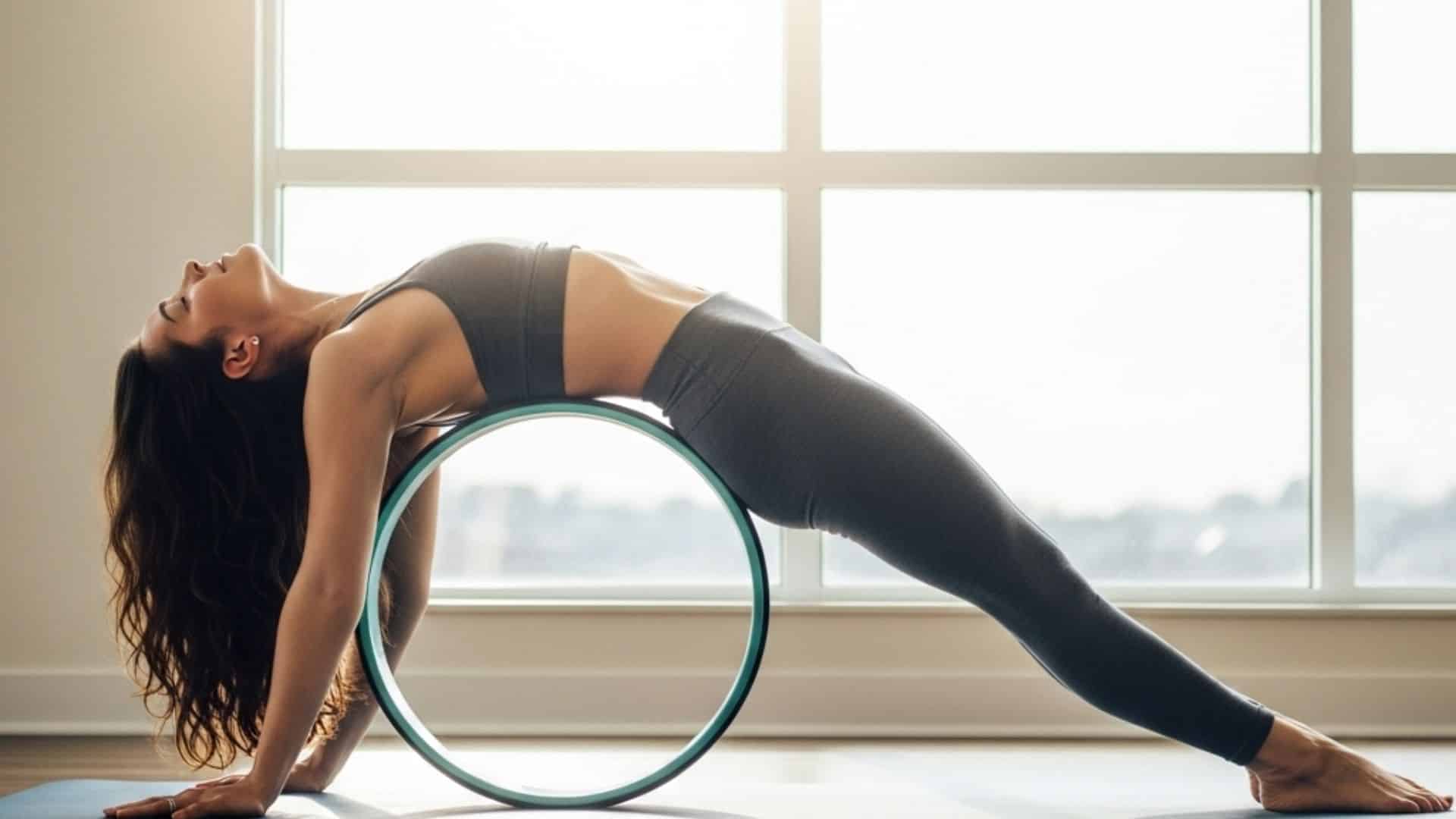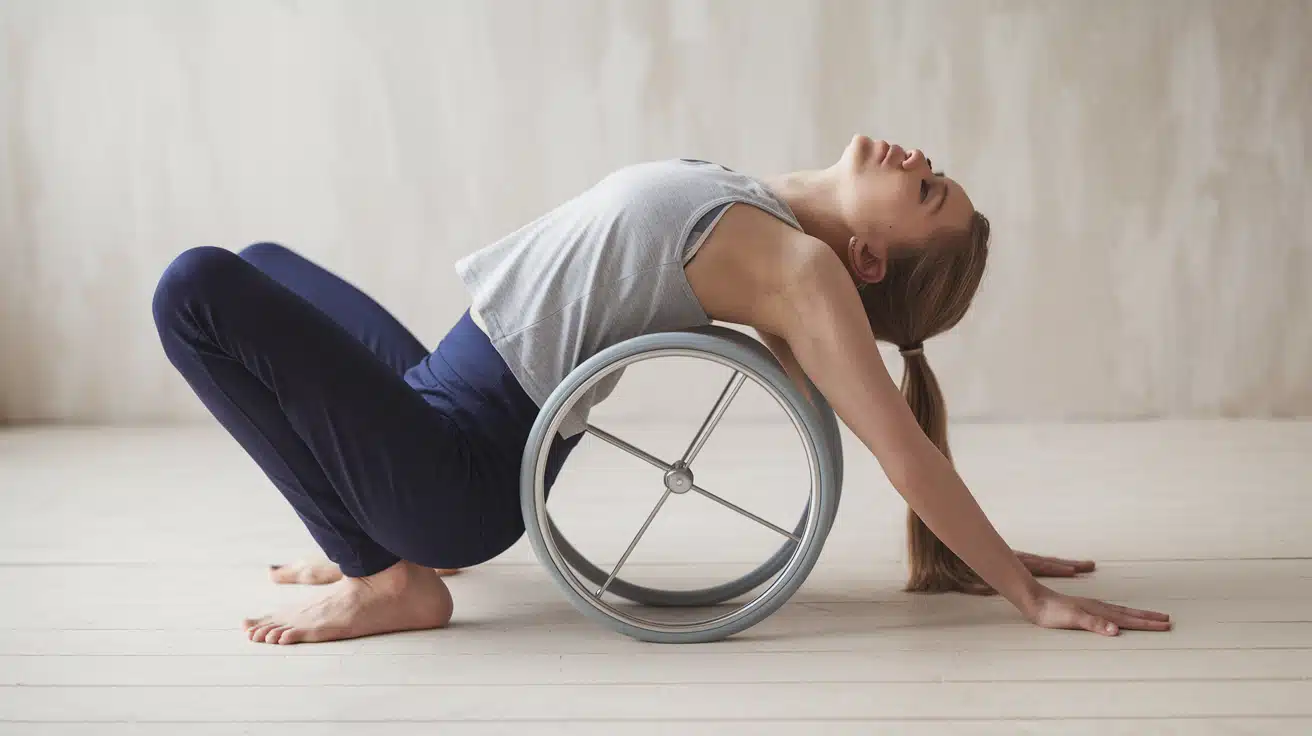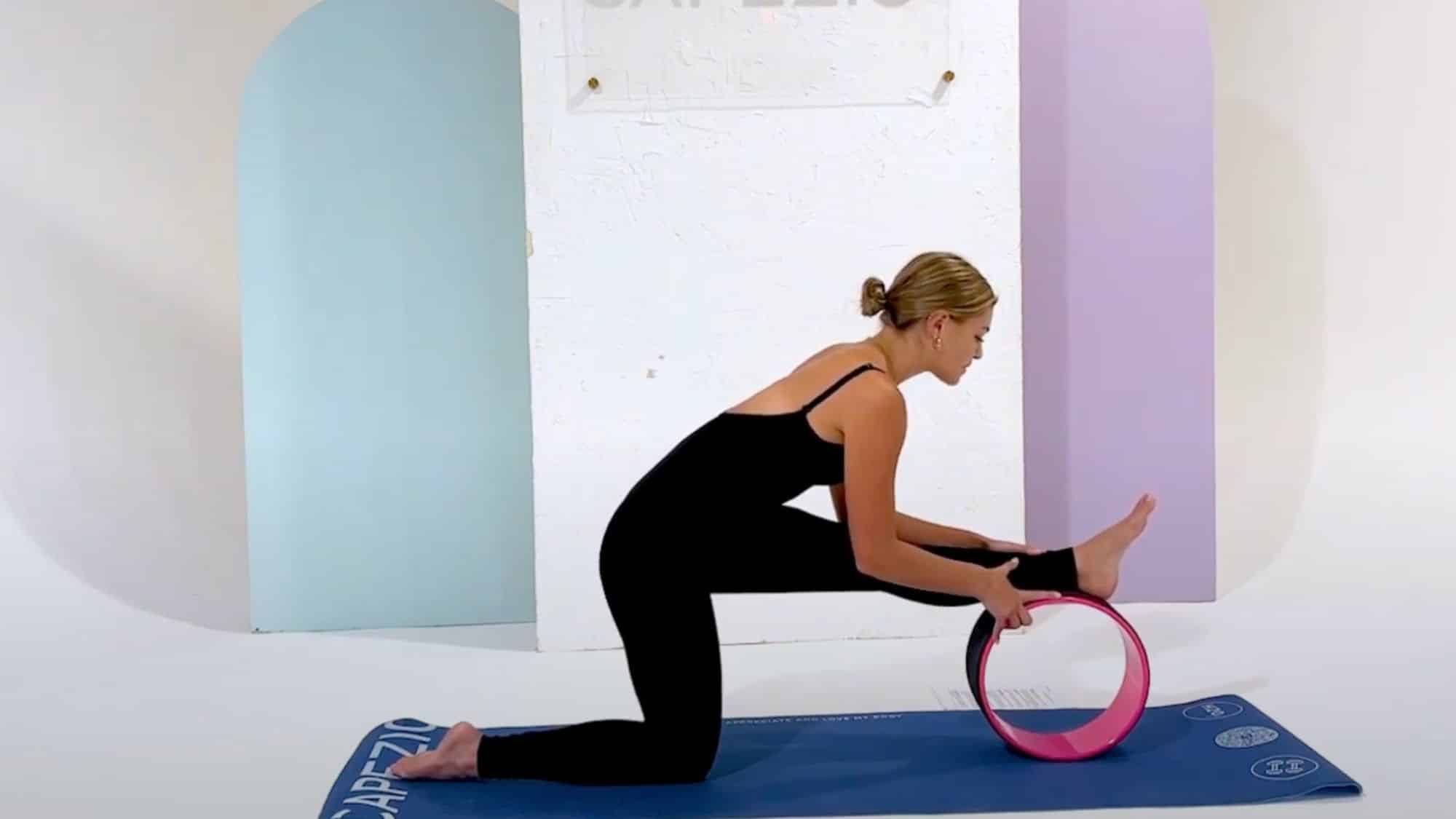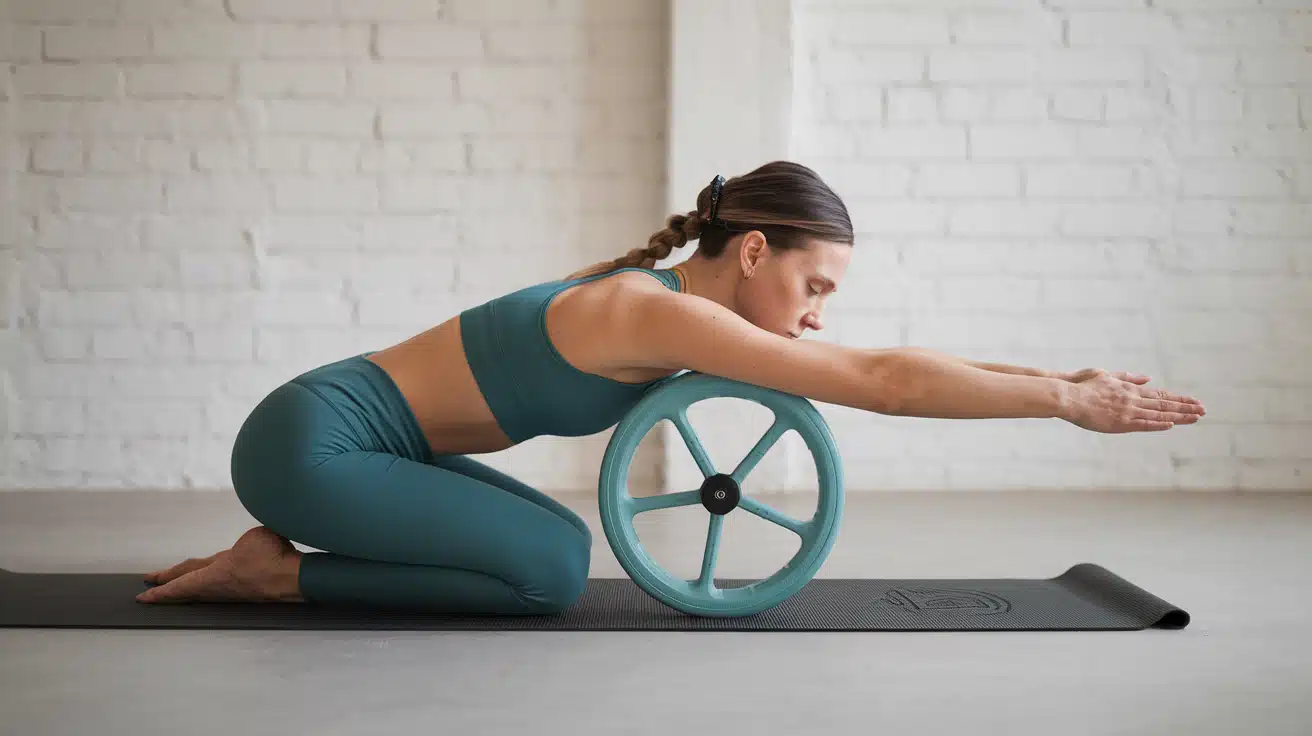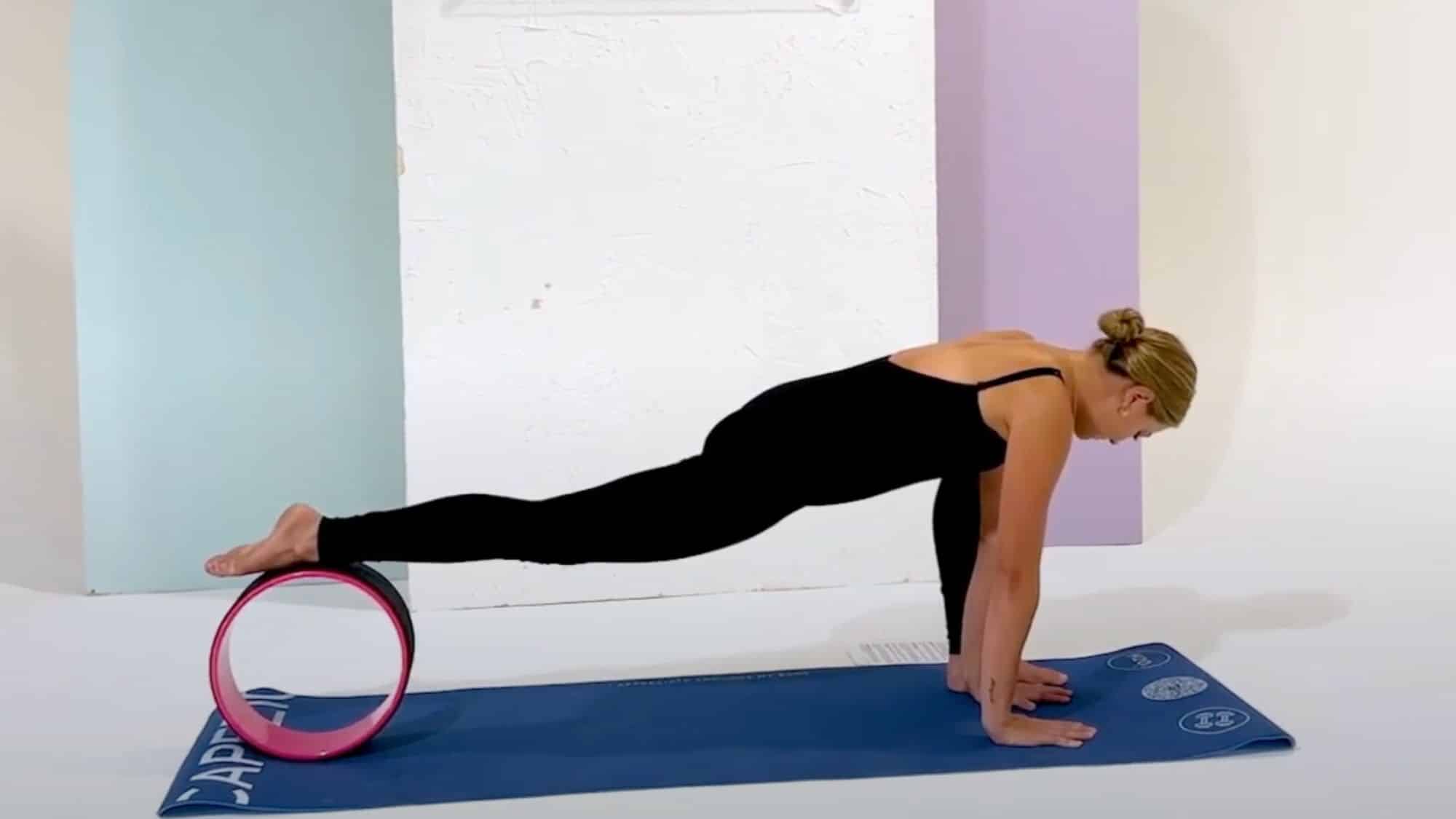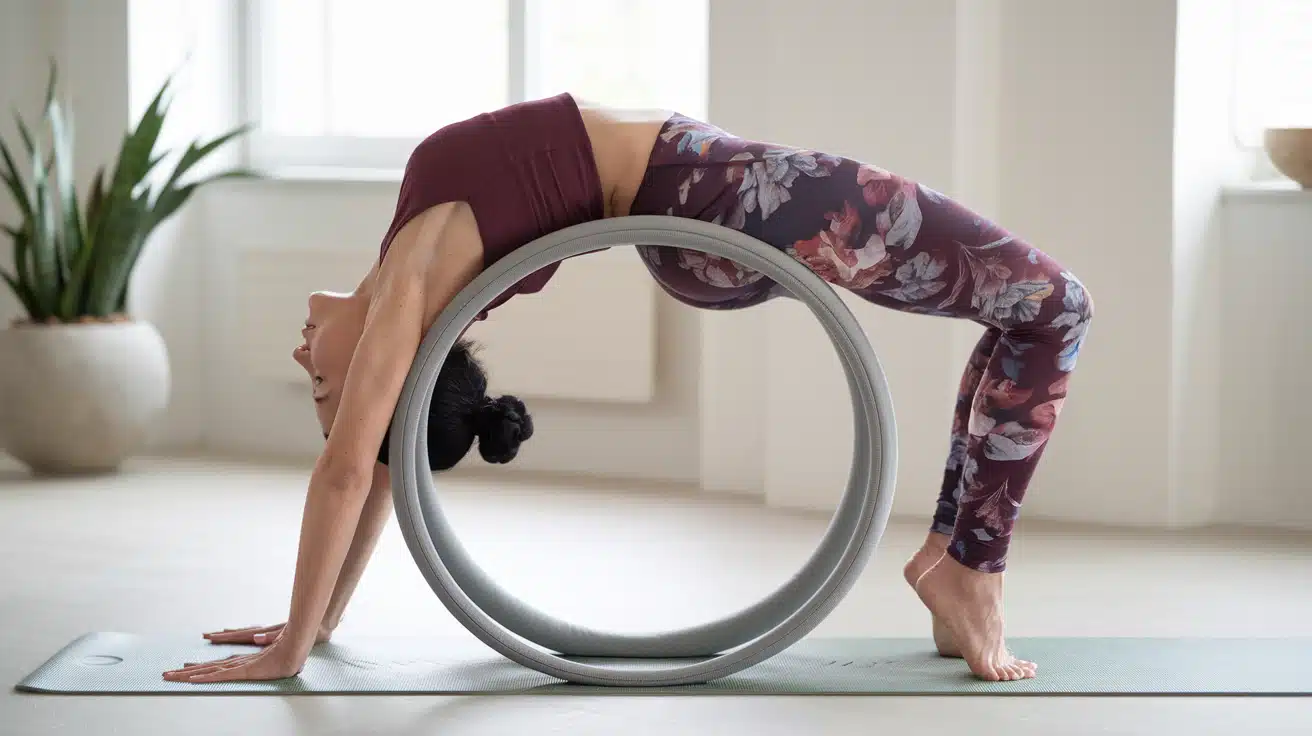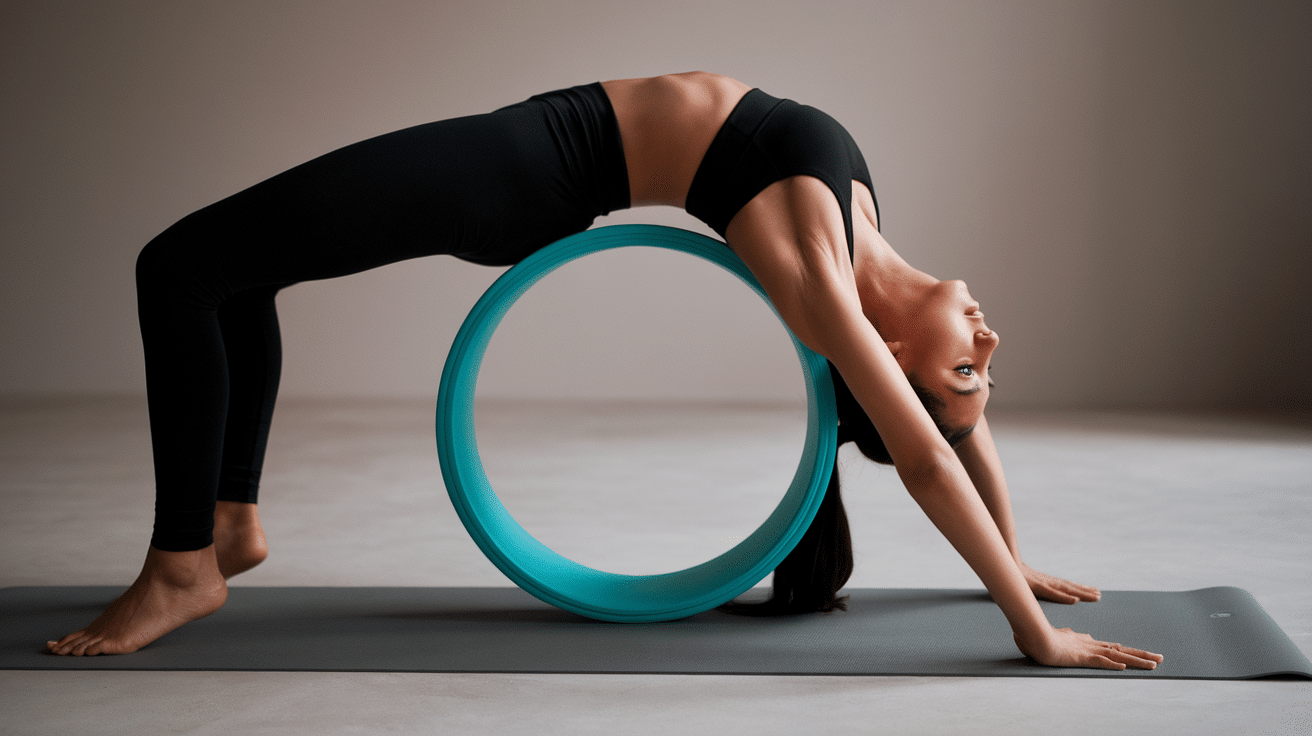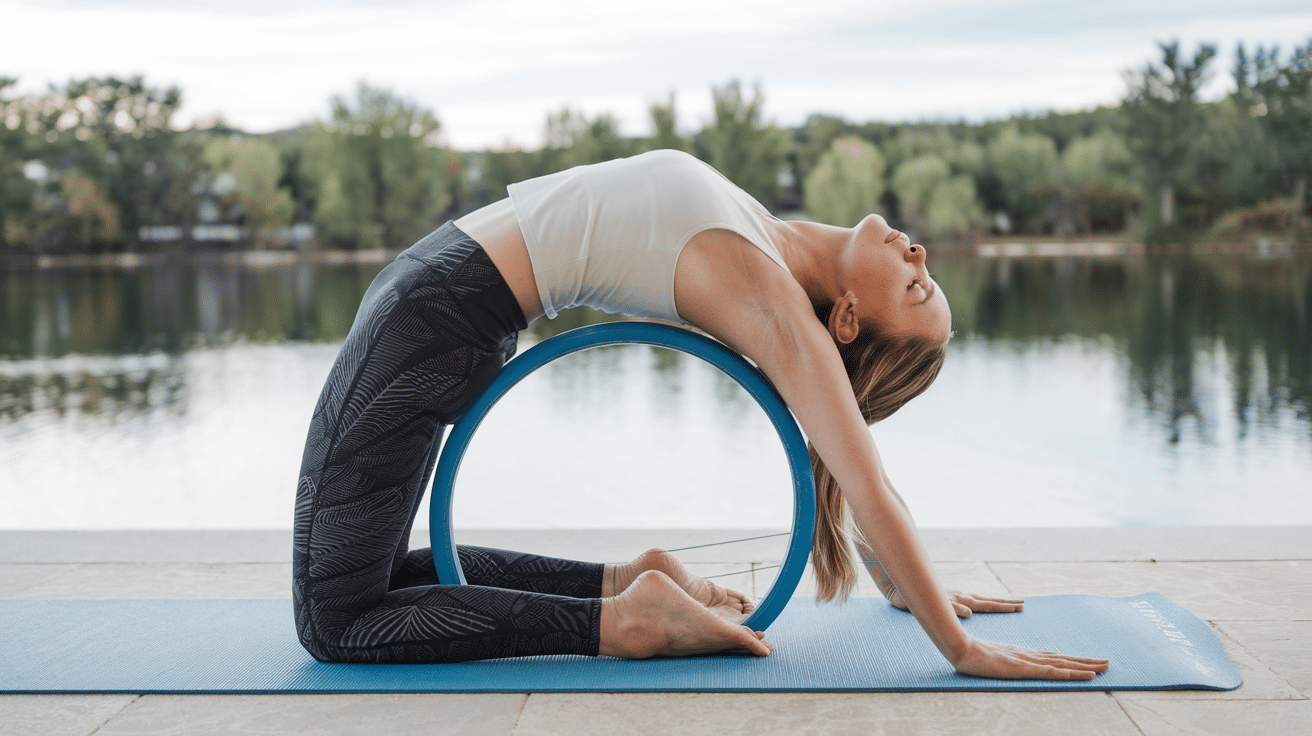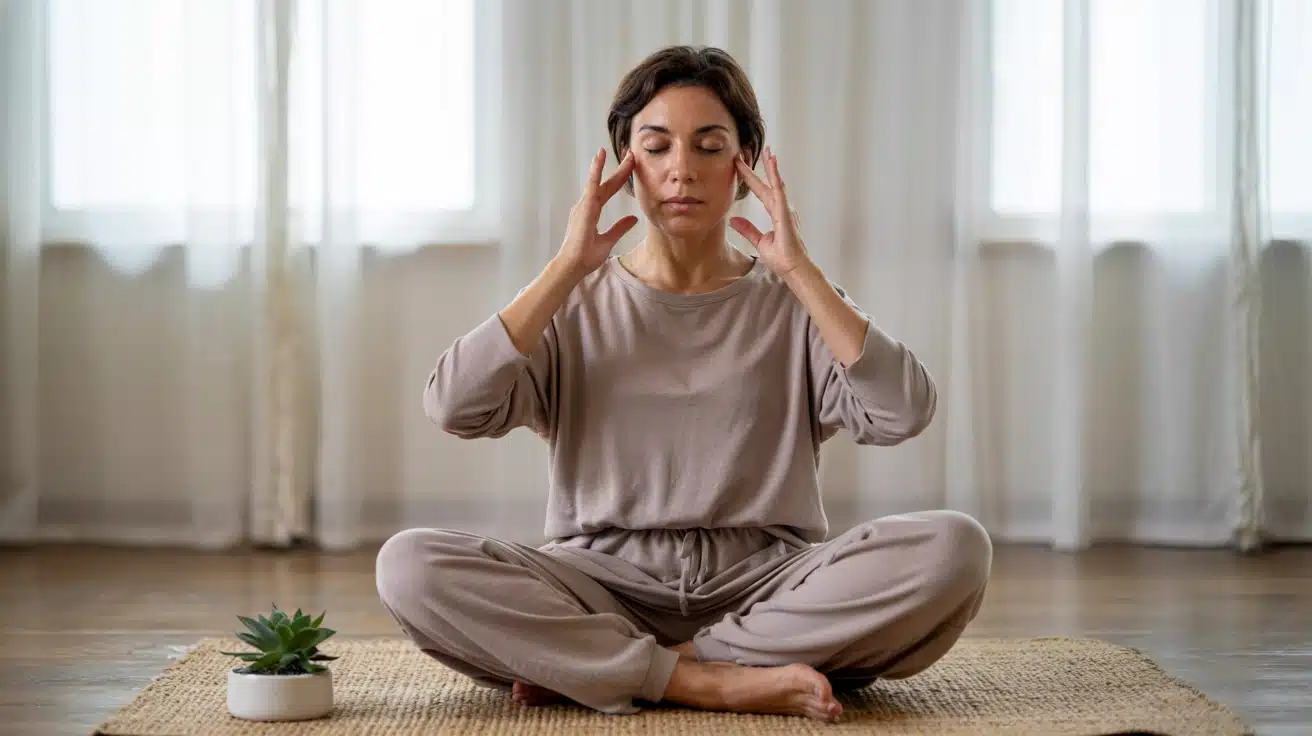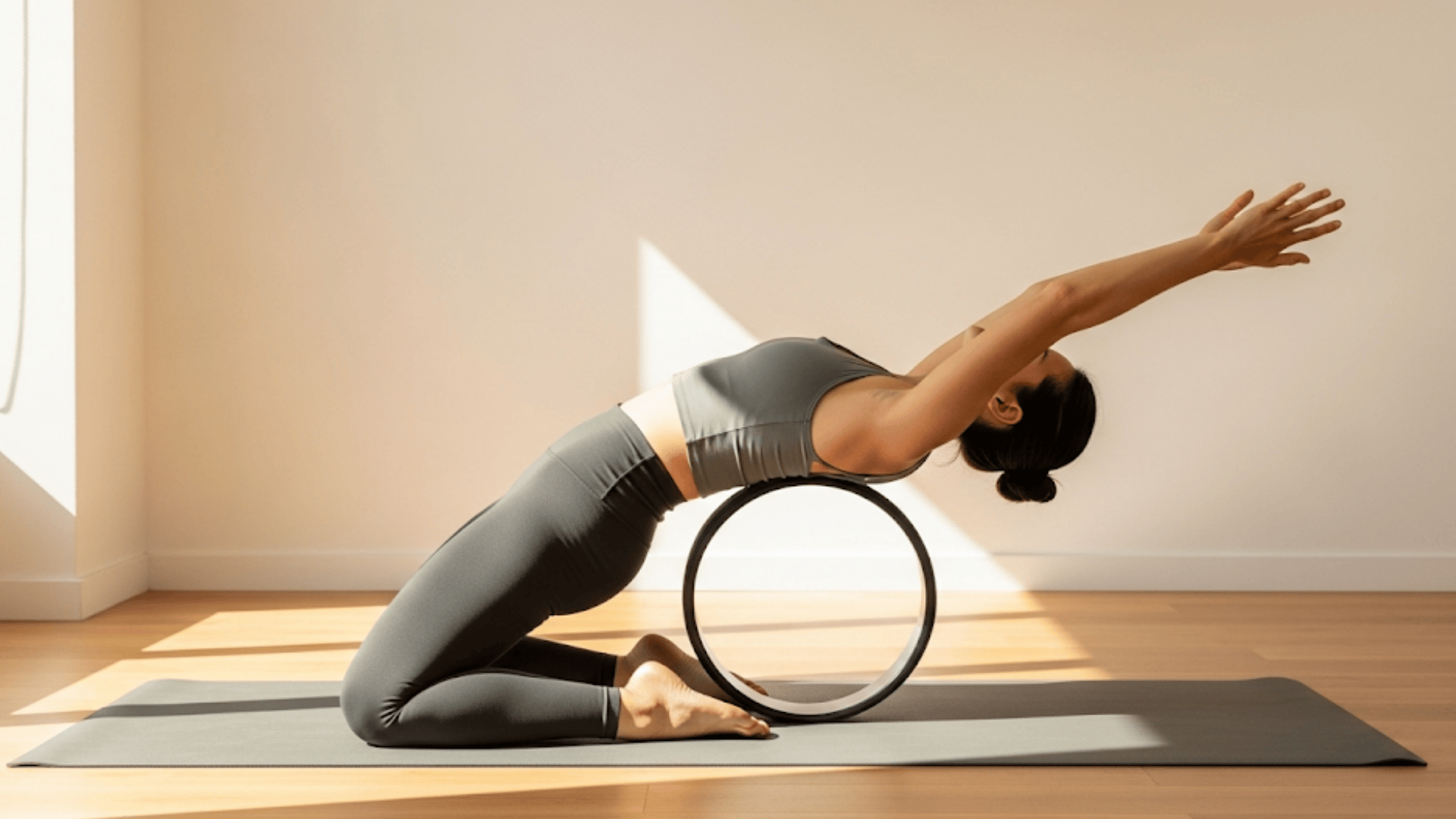Looking at your yoga wheel sitting in the corner, collecting dust? You’re not alone; many people buy this incredible product but have no idea how actually to use it safely and effectively.
Here’s the thing: a yoga wheel isn’t just another fitness fad. When used correctly, it can transform your practice by deepening stretches, relieving back pain, and making challenging poses accessible to beginners.
I’ve seen students go from stiff and uncomfortable to flowing through backbends they never thought possible.
But here’s what excites me most – you don’t need to be a yoga expert to start seeing results. With just a few basic techniques, you can unlock better flexibility, stronger core muscles, and that sweet relief your spine has been craving.
Ready to uncover how this simple 12-inch circle can revolutionize your yoga journey?
What Is a Yoga Wheel?
A yoga wheel is a 12-inch diameter circular prop made from plastic, wood, or mixed materials. This cylinder-shaped tool has gained popularity among yoga practitioners for its versatility in enhancing practice, offering support for challenging poses, deepening stretches, and creating balance challenges to improve flexibility and strength.
Key Benefits of Using a Yoga Wheel
- Deepen Stretches: The wheel helps extend your range of motion, particularly for chest, shoulders, and back muscles.
- Provide Support: Offers stability for difficult poses, making advanced postures more accessible to beginners.
- Create Balance Challenges: Adds an element of instability that engages your core and improves balance.
- Massage the Spine: Rolling movements provide gentle pressure that can relieve joint tension and back pain.
- Improve Flexibility: Regular use helps open tight areas in the chest, shoulders, and spine.
- Enhance Posture: Backbend exercises with the wheel help counteract forward head posture and rounded shoulders.
- Strengthen Core: Many wheel exercises require core engagement for stability.
The yoga wheel supports your body weight while allowing for controlled movement through poses, making it suitable for practitioners of all levels seeking to improve their flexibility and strength.
Yoga Wheel Exercises for Beginners
1. Wheel-Assisted Child’s Pose
A gentle resting pose that adds deeper shoulder and chest stretch by reaching forward over the wheel’s raised surface while maintaining hip flexibility.
Benefits: Stretches hips, thighs, low back, shoulders, and chest
- Kneel with big toes touching, sit back on heels
- Place the wheel between your knees, hands on top
- Exhale and lean forward, rolling wheel away while lengthening the spine
- Continue until the belly rests between thighs with arms stretched straight
- Hold for at least 3 breaths
2. Reclining Easy Pose
A cross-legged seated position enhanced with a controlled chest-opening backbend that helps release tension between the shoulder blades comfortably.
Benefits: Opens chest, relieves shoulder tension
- Sit cross-legged in front of wheel, aligned with your spine
- Place hands on knees, palms up
- Exhale and extend spine over wheel, allowing head to rest on top
- Breathe deeply for at least 5 breaths
3. Wheel-Assisted Fish Pose
A chest-opening backbend that stretches pectoral muscles while the wheel provides support.
Benefits: Stretches pectoral and shoulder muscles
- Sit with legs extended, wheel behind back parallel to spine
- Hold wheel lightly, inhale and lean backward over it
- Lift hips to deepen pose, let wheel support spine between shoulder blades
- Open arms wide for balance
- Hold for at least 3 breaths
4. Wheel Reclined Butterfly Pose
A modified butterfly pose that incorporates the wheel to stretch hip flexors while opening the chest in a supported backbend position.
Benefits: Stretches hip flexors and opens chest
- Sit with feet together, knees bent toward floor
- Place wheel behind lower back
- Exhale and lean back, letting wheel support your neck
- Place arms behind you, breathe deeply
- Hold for several breaths
5. Wheel-Assisted Half Pyramid Pose
An accessible hamstring stretch that uses the wheel for support, making it easier to maintain proper alignment while deepening the stretch.
Benefits: Stretches tight hamstrings
- Kneel on one knee, other knee bent at 90 degrees
- Place wheel under front thigh, touching your calf
- Roll wheel forward so front leg extends fully
- Flex front foot, inhale to lengthen spine
- Exhale and lean forward from hips, keeping back straight
- Hold for 3-5 breaths, repeat on other side
Captured from Capezio, experience this pose in motion by watching it live at Capezio
6. Shoulders & Upper Back Stretch
A kneeling stretch that opens tight shoulder and upper back muscles by extending arms over the wheel while maintaining proper spinal alignment.
Benefits: Opens tight shoulders and upper back
- Kneel with wheel in front, place hands on wheel
- Keep back, hips, spine aligned
- Extend arms until you feel stretch in upper back and shoulders
- Hold for at least 20 seconds
7. Wheel-Assisted Lizard Lunge
A lunge variation that adds balance challenge and deeper stretch by extending the back leg with wheel support while opening the hips.
Benefits: Stretches quads, hip flexors, opens hips
- Kneel on one knee, other foot flat on ground
- Place wheel under back foot at ankle
- Lean forward, hands on ground inside front foot
- Press into wheel, lift back knee and extend back leg
- Hold for 3-5 breaths, switch sides
Captured from Capezio, experience this pose in motion by watching it live at Capezio.
8. Wheel-Assisted Upward-Facing Two-Foot Staff Pose
A supported backbend that helps build confidence and strength for advanced poses by providing spinal support while working toward deeper backbends.
Benefits: Builds confidence for advanced backbends
- Sit with knees bent, feet flat, wheel behind back
- Hold wheel lightly, lean back and release hands
- Press through heels, lift hips, reach arms overhead
- Let wheel roll between shoulder blades
- Hold for 3-5 breaths
9. Wheel-Assisted Back Bend Pose
A strengthening backbend that improves posture and builds back muscles, while the wheel provides support for proper alignment and safety.
Benefits: Strengthens back muscles, improves posture
- Sit with feet flat, knees bent, wheel behind you
- Allow the back to rest over the wheel as you lean back
- Lift hips and place hands by ears
- Hold for several breaths
10. Wheel-Assisted Pigeon Pose
A backbend exercise that targets both upper and lower back muscles, while the wheel provides support for achieving proper form safely.
Benefits: Great backbend for upper and lower back
- Kneel with the wheel between your feet
- Lean back slowly, arms raised overhead, reaching forthe wheel
- Grab the wheel’s opposite side, circle hands until the head touches the ground
- Hold for several breaths
Yoga Spine Sequence
Convert your spine health with targeted yoga wheel sequences that provide immediate pain relief through gentle massage, controlled stretching, and proper alignment restoration for lasting comfort.
| Pose | Duration | Instructions | Benefits |
|---|---|---|---|
| Supported Child’s Pose Opening | 30-60 seconds | Kneel in front of the wheel, place forearms on top, gently roll forward allowing chest to open | Gentle spinal extension, shoulder opening |
| Seated Spinal Wave | 30-60 seconds | Sit with wheel behind lower back, lean back for support, use feet to roll up and down spine | Spinal massage, tension release |
| Gentle Backbend | 30-60 seconds | Sit in front of wheel, lean back until mid-back is supported, extend arms overhead or behind head | Counteracts forward head posture, opens chest |
| Side Body Stretch | 30-60 seconds each side | Sit beside wheel, place side body against it, lean over extending top arm | Lateral spinal flexibility, intercostal muscle stretch |
| Supported Fish Pose | 30-60 seconds | Lie on back with wheel under shoulder blades, let head hang back, extend arms out or overhead | Opens chest, relieves upper back tension |
| Hip Flexor Release | 30-60 seconds each side | Kneel with wheel in front, place hands on wheel, step one foot forward into lunge, roll wheel forward | Releases tight hip flexors that contribute to lower back pain |
| Spinal Twist | 30-60 seconds each side | Sit beside wheel, place one hand on wheel and one behind you, gently twist spine | Spinal mobility, digestive health |
| Relaxation Roll | 30-60 seconds | Lie on back, place wheel under knees, gently rock side to side | Lower back massage, relaxation |
These specialized yoga wheel sequences offer comprehensive back pain relief by combining spinal massage, muscle stretching, and posture correction to address the root causes of discomfort naturally.
Conclusion
Your yoga wheel journey doesn’t have to end here. Start with just one or two poses that feel comfortable, and gradually build your practice as your confidence grows. Remember, consistency beats intensity; even five minutes of daily wheel work can create lasting changes in your flexibility and back health.
I’ve watched countless students change their practice by simply showing up and trying. Some days you’ll feel like a yoga rockstar, other days you’ll wobble through basic poses. That’s completely normal and part of the process.
The most important thing? Listen to your body and never force a stretch. Your yoga wheel is there to support you, not challenge you to the point of pain.
Ready to roll? Grab that wheel and give your spine the love it deserves.
Don’t forget to check out the Yoga Poses section to learn more about yoga poses and expert tips to practice yoga like a pro.

